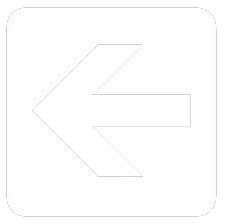|
 Previous part (How the Telephone came about) Previous part (How the Telephone came about)
2nd June 1875
Experimenting with the Harmonic Telegraph
continued into the spring and early summer of
1875. Bell had discovered that the reason
messages were getting mixed up was the
inaccuracy of the adjustment of the receiver
springs in relation to the transmitter. Bell had to
tune the instrument himself by hand - his sense of
pitch being highly refined from his musical and
acoustic background. To do this, Bell would hold
the receiver against his ear whilst the distant
transmitter was operating. The transmitter was in a
different room about 60 feet away with a wire
connection between them.
On 2nd June 1875 the experiments were
proceeding as usual but things were badly out of
tune that afternoon and Watson's patience was
evaporating. Watson, as usual, was in charge of
the transmitter whilst Bell held the receiver against
his ear and adjusted its tuning. In Watson's own
words:
"One of the transmitter springs I was attending to
stopped vibrating and I plucked it to start it again. It
didn't start, and I kept plucking it when suddenly I
heard a shout from Bell in the next room". He
came rushing in "What did you do then? Don't
change anything. Let me see!"
What had happened was that the screw holding
the spring in place was screwed so tight it made
permanent contact with the spring. As the spring
was plucked and started vibrating the electrical circuit had remained unbroken whilst the magnetic
steel spring vibrating over the pole of the magnet
had just generated what Bell had hypothesised
about for so long - an electrical current varying in
intensity precisely as the air varied in intensity
around the spring.
The resulting undulating or 'analogue' current -
analogue meaning it was in sync with, or
"analogous to" the original sound wave - passed
down the wire to the receiver, which, by chance,
had been pressed against Bells ear at the correct
moment. As the receiver vibrated in unison with
the received current Bell had recognised the
resulting faint sound as being electrically
transmitted.
This was the first transmission between
microphone and speaker.
Before they finished work that night, Bell gave
Watson detailed instructions on a prototype
transmitter/receiver.
Watson was to mount a membrane over one of the
receivers (a little like placing a tight piece of cling
film over the top of a glass), fasten the centre of it
to the end of the Harmonic Telegraphs' spring and
fasten a mouthpiece over the membrane to funnel
the sound waves onto it. As the sound waves
collected at the base of the funnel they would
vibrate the membrane which would pull backwards
and forwards on the spring causing the electrical
current flowing in the circuit to the receiver to vary
in intensity.
The two rooms in the attic workshop they were
using were too close together for a proper
experiment - you could hear reasonably well
without a telephone - so Watson ran a wire from
the attic, down two flights of stairs to the main
workshop - the first telephone line.
Shout as loud as he could, Watson could not make
Bell hear him, but he could hear Bell, and almost
make out the words.
Nevertheless it was enough to convince Bell they
were on the right track and before departing that
night he gave Watson more detailed instructions
on improvements for the next batch of telephones
he was to have ready for the next test.
Watson & Bell continued to refine the
transmitter/receiver and the following March were
able to transmit clearly a complete intelligible
sentence. The occasion was not rehearsed. The
first telephone message being "Watson, come here
I need you!" Perhaps if Bell had realised he was
about to make history he would have been
prepared with a more ceremonial message, as it
was he had just spilt sulphuric acid on his trousers
and needed some urgent assistance!
|
